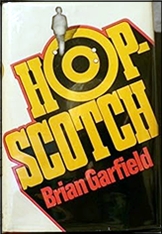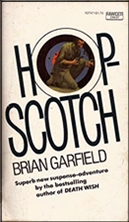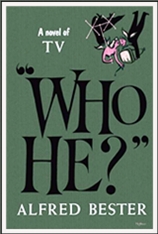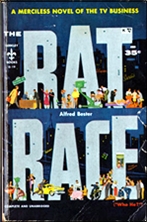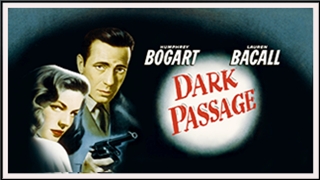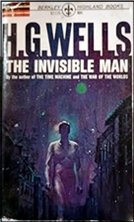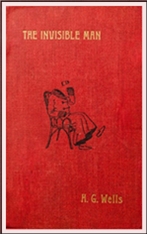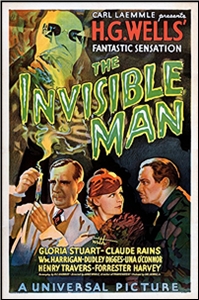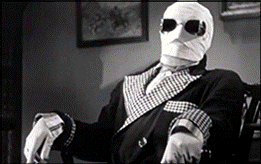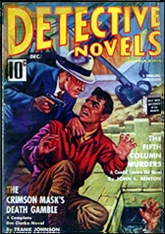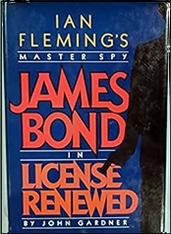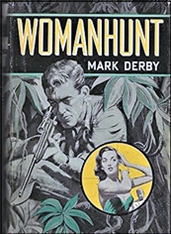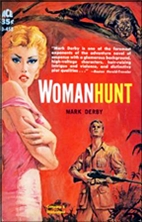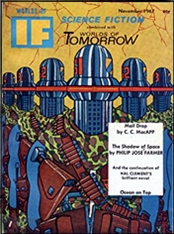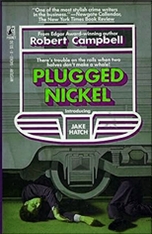Mon 22 Sep 2025
PulpFest 2025 Convention Report, by Martin Walker
Posted by Steve under Collecting , Conventions , Pulp Fiction1 Comment
by Martin Walker
PulpFest 2025 got underway early on Wednesday evening, August 6, when the convention’s chairperson, Jack Cullers, opened the dealers’ room at the DoubleTree by Hilton Pittsburgh — Cranberry for vendors to set up for the convention. Many PulpFest dealers took advantage of this early setup to load in their wares and socialize with friends.
According to PulpFest’s marketing and programming director, Mike Chomko, the DoubleTree staff went above and beyond to have the hotel’s exhibition hall ready and waiting for the convention’s dealers. He recommends that all PulpFest vendors take advantage of the convention’s early set-up hours to prepare their exhibits for the convention’s official opening the next day.
After the dealers’ room closed at 9 p.m., a small crowd gathered in the programming room for a showing of Frank Lloyd’s 1924 silent film adaptation of Rafael Sabatini’s The Sea Hawk. This year, PulpFest celebrated the sesquicentennial of the historical fiction writer’s birth. Although his work appeared predominantly in British magazines and hardcover, Sabatini’s fiction also ran in Adventure, The Cavalier, Top-Notch Magazine, and other periodicals.
PulpFest 2025 officially opened on Thursday morning, August 7, with the arrival of more dealers for unloading and setup. Early-bird shopping began around 9 a.m. and continued until 4:45 p.m.
This year’s dealers’ room sold out several months before the start of the convention. In order to accommodate additional dealers, PulpFest expanded into the hallway, just outside the main exhibition area. With more than twenty additional tables in the foyer, the convention had over 90 exhibitors with their displays covering more than 170 tables.
Dealers with substantial pulp offerings included Adventure House, Ray Walsh’s Archives Book Shop, Steve Erickson’s Books from the Crypt, Doug Ellis & Deb Fulton, Heartwood Books & Art, Paul Herman, John McMahan, Peter Macuga, Phil Nelson, Sheila Vanderbeek, and Todd & Ross Warren. You could also find original artwork offered by Doug Ellis & Deb Fulton, George Hagenauer, Craig Poole, and others.
In addition to pulps and original artwork, you could find digests, vintage paperbacks, men’s adventure and true crime magazines, first-edition hardcovers, genre fiction, series books, Golden Age, Silver Age, Bronze Age, and pulp-related comic books, and more.
Additionally, one could find pulp reprints and contemporary creations, including artwork, new fiction, and fanzines produced by Age of Aces, Edgar Rice Burroughs, Inc., Wayne Carey, Flinch! Books, Doug Klauba, Craig McDonald, Meteor House, Charles F. Millhouse, Brian K. Morris, Will Murray, Wayne Reinagel, The Shadowed Circle, Stark House, Steeger Books, Mark Wheatley, and others.
New authors and publishers who attended their first PulpFest included Brian Belanger, Robert Mendenhall of Blue Planet Press, Allan Liska of Green Archer Comics, Duane Laflin, Joseph Nelson of Point of Impact Publishing, and Veritas Entertainment.
The fifth annual PulpFest Pizza Party followed the closure of the dealers’ room at 5 p.m. About 80 pizzas were baked for the convention’s members, thanks to the generosity of PulpFest’s dealers. Since it was started in 2021, the annual pizza gathering has become a very popular fixture at PulpFest. The convention’s advertising director, Bill Lampkin, promises more “Pizza at PulpFest” gatherings in the years to come.
Following opening remarks by chairman Cullers, the convention’s admirable programming line-up began with Bernice Jones & Cathy Wilbanks exploring Edgar Rice Burroughs’ ideas concerning manhood. Afterward, Ed Hulse discussed another birthday boy, Edgar Wallace. Known as “The King of the Thrillers,” 2025 also marked the 150th anniversary of the author’s birth.
Tim King of The Shadowed Circle, and pulp historian and author Will Murray came up with a roster featuring the “Masters of Villainy,” part of the convention’s salute to the 90th anniversary of such villain pulps as Doctor Death and The Mysterious Wu Fang. Both debuted in 1935, along with Doctor Satan in Weird Tales.
The convention’s Burroughs programming continued — ERB completed the trio of authors born in 1875 — with an entertaining foray into the world of Tarzan merchandising by writer and publisher Jim Beard. Next came a peek at Adventure magazine and the creators who made it “The No. 1 Pulp,” according to Time magazine. Tom Krabacher, Kurt Shoemaker, and, once again, Ed Hulse discussed the writers, departments, and particularly, editor Arthur Sullivant Hoffman. It was these “masters” who made Adventure the best pulp on the newsstand.
Thursday closed out with a showing of King Kong, the 1933 movie classic on which Edgar Wallace lent a hand. The author died while working on the film due to complications from undiagnosed diabetes.
Despite a long day of buying and selling, and an evening packed with programming, many conventioneers gathered in the hotel lounge to talk and reminisce about their favorite authors, cover artists, and pulp characters long into the night. Late Thursday night was scheduled as a “Bronze Bash,” an informal gathering of the “Fans of Bronze,” many of whom helped to revive the long-defunct Doc Con, which took place at this year’s PulpFest.
There was more buying and selling on Friday, August 8. Competing for attendees’ attention were three afternoon presentations. Authors John Bruening, Morgan Holmes, Craig McDonald, and Will Murray, with William Patrick Maynard moderating, got the ball rolling with a panel discussion concerning “Personal Demons and the Creative Mind.” Next came the 2025 “Flinch! Fest,” hosted by John C. Bruening & Jim Beard of Flinch! Books, followed by “The Universe According to Edgar Rice Burroughs,” a panel led by Christopher Paul Carey — director of publishing for Edgar Rice Burroughs, Inc. — and Cathy Wilbanks, the organization’s Vice President of Operations. Joining them were writers Chris L Adams & Win Scott Eckert, both of whom have continued the popular creations of ERB. There was also a Burroughs-inspired art show hosted by Henry G. Franke III, co-founder of ERBFest and editor of The Burroughs Bulletin and The Gridley Wave.
After the dinner break came more evening programming, beginning with a look at the “Masters of Men’s Adventure Magazines,” presented by Wyatt Doyle, one of the co-editors of “The Men’s Adventure Library.” Next came a pair of contemporary artists — Mark Wheatley and Doug Klauba — both inspired by ERB’s creations, who explored “The Masters of Tarzan Illustration.”
The panelists for Farmercon XX also took to the stage to discuss “Tarzan the Time Traveler and Discourses on Doc.” Christopher Paul Carey & Win Scott Eckert explored Philip José Farmer’s novel, Time’s Last Gift, and the writings of the Science Fiction Grand Master that concerned Doc Savage. Morgan Holmes examined the historical fiction of Rafael Sabatini, while a conversation between Will Murray and filmmaker Ron Hill concerning the sixties revival of Lester Dent’s Doc Savage by Bantam Books closed out the programming.It was followed by a late-night showing of George Pal’s Doc Savage: The Man of Bronze. Love it or hate it, 2025 marked the fiftieth anniversary of the release of the pulp-inspired movie.
Once again, there were more late-night gatherings in the DoubleTree’s lounge area. Friday night’s informal socializing was billed as “Fraternize at Farmercon.”
On Saturday, August 9, the dealers’ room opened again at 9 a.m. and brisk business continued. All told, 464 people passed through the entrance to the PulpFest 2025 dealers’ room, where they were tempted by 150 tables filled with thousands of pulp magazines, digests, vintage paperbacks, original art, and much more. But before entertaining, all shoppers had to pass through twenty or more additional tables in the foyer, including booths devoted to ERBFest and Doc Con, two of the “micro-conventions” that have associated with the annual PulpFest.
Henry Franke’s “Edgar Rice Burroughs, Master of Adventure” art show again tempted attendees to leave the dealers’ room to look at the displays inspired by the popular writer. “Pop Culture Archaeologist” Michael Stradford was also on hand to discuss actor and model Steve Holland, the man who “became” Doc Savage for James Bama and some of the other artists who painted the paperback covers for the Bantam Books series. Next came devoted Doc Savage fans, Ron Hill and Chris Kalb, with a look at George Pal’s film and its history and promotion. Closing out the afternoon programming was a “fan cut” of the film. It was a fitting close for Doc Con’s celebration of the golden anniversary of Pal’s Doc Savage: The Man of Bronze.
After the close of the dealers’ room and the dinner break, came more evening programming, beginning with a look at PulpFest 2026, presented by committee members Cullers and Chomko. Afterward, the 2025 Munsey Award was presented to researcher, writer, and all-around good guy, John DeWalt. The Munsey Award recognizes an individual or organization that has bettered the pulp community, be it through disseminating knowledge about the pulps or through publishing or other efforts to preserve and foster interest in the pulp magazines we all love and enjoy.
This year, a second award was presented: the Rusty Award, named after longtime Pulpcon organizer Rusty Hevelin. It was given to Ray Walsh, longtime dealer, convention organizer, and, with Robert Weinberg, publisher.
Professor Garyn Roberts closed out this year’s programming with his memories of Ray Bradbury, the writer that he called a friend. Bradbury also happened to be a devoted fan of Edgar Rice Burroughs.
Ending the evening was the convention’s Saturday night auction. It featured over 250 lots of material including a nice run of the large-sized Argosy from the early 1940s; over 50 issues of New Worlds Science Fiction, long the leading British science fiction magazine; 26 early issues of Weird Tales in good to very good condition; a complete set of Bantam’s Doc Savage paperbacks; several Arkham House first editions; a nice selection of Shadow pulps; the ultra-rare LA Bantam Book #13, Children’s Favorite Stories; a run of Who’s Who in Baseball from the 1930s; artwork by Michael Kaluta; and more.
The highlights of the auction were two lots of Street & Smith’s People’s Magazine. Each of these sold for amounts far north of $1500. You’ll find the results of this year’s auction on the PulpFest website. Click the “2025 Auction” button at the top of the convention’s homepage.
Once more, pulp fans socialized in the hotel’s lounge after the auction. Saturday’s informal gathering was billed as a “Barsoomian Bull Session.” Door prizes were available, thanks to Henry Franke, co-founder of ERBFest.
This was the fourth time that PulpFest had hosted both Farmercon — which has been coming to PulpFest almost annually since 2011 — and ERBFest — a “convention within a convention” that began at PulpFest in 2021. Joining them was a third convention — Doc Con, a gathering of the fans of “The Man of Bronze.” It had been nearly a decade since the last Doc Con.
According to PulpFest’s Mike Chomko and The Shadowed Circle’s Tim King, next year’s PulpFest will also be hosting a brand new convention: Shadow Con. We hope no one has been “clouding their minds” and that the rumor is true.
Although the dealers’ room opened for a final time on Sunday, August 10, buying and selling opportunities were limited as dealers packed up and prepared for the drive home.
PulpFest 2026 will take place July 30 through August 2 at the DoubleTree by Hilton Pittsburgh — Cranberry in Mars, Pennsylvania. The convention will be celebrating the centennials of Amazing Stories and Ghost Stories. Both magazines premiered in 1926. You can learn more by visiting pulpfest.com.
